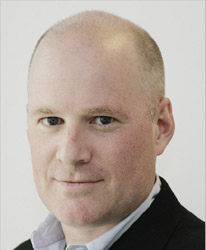TREASURY
Taking a page out of the high school relationship handbook, the Federal Reserve has a message for financial markets: start paying attention to us or we might start dating your friend.
 Except the Fed version of the dump and switch is an interest rate hike in June or July, a step the U.S. central bank has been at pains to stress it is very happy to do.
Except the Fed version of the dump and switch is an interest rate hike in June or July, a step the U.S. central bank has been at pains to stress it is very happy to do.
Speaking a day after minutes from the Fed's April meeting jolted markets into upgrading expectations of a rate hike soon, New York Federal Reserve President William Dudley on Thursday sounded happy to be taken, at last, seriously.
"Clearly looking back a few days ago I think there's a pretty strong sense among FOMC membership that the market was not putting a sufficient probability (on the) June or July meeting," Dudley said, calling himself "quite pleased" that expectations had risen.
Markets are now placing a one-in-three probability of a June hike and a 53 percent chance of one in June or July.
As ever hedging their bets, even when sending a message, the April Federal Open Market Committee minutes said "if incoming data were consistent with economic growth picking up in the second quarter, labor market conditions continuing to strengthen and inflation making progress toward the (Fed´s) 2 percent objective, then it likely would be appropriate for the (Fed) to increase the target range for the federal funds rate in June."
Some officials, according to the minutes, saw market expectations of a June hike as "unduly low" while putting stress on the need for clear communication about how they will respond to developments.
We are now getting that clear communication, and along with it a rise in the value of the dollar and moderate drop in share markets.
The issue, though, is that Fed communication exists, like high school romances, in a context, in this case one which makes it slightly difficult to take threats too very seriously.
While the Fed continues to call itself "data dependent" we have had only one rate hike, and that one was delayed last year by unpleasant market trading in China, or more to the point, when China concerns caused a U.S. sell-off in risk assets.
U.S. core inflation is rising at a 2.1 percent annual pace, slightly above the Fed´s target, and unemployment is at 5 percent.
So why were futures markets so certain hikes would be delayed?What has happened, instead, to cause the market to downgrade its expectation that the Fed would be slow in getting around to the four rate hikes it forecast at the beginning of the year are essentially global events.
Another bout of China jitters in the early part of the year, and the language coming out of the Fed in reaction was what built those market expectations which the central bank now seeks to correct.
To put it simply, there is a widespread belief that the Fed has an unvoiced mandate to support asset prices.
This belief may well be proved wrong - perhaps the S&P 500 will tumble 6 or 8 percent and we will still get our hike in June or July.
It might happen but it would be a departure from previous form.
James Montier and Philip Pilkington at fund managers GMO have shown that the eight annual FOMC days account for 25 percent of the real returns on the S&P 500 since 1984.So, if things look OK in June, and if the British vote on EU membership seems highly likely to result in continued union, then we might see a hike from the Fed.
Surely, they would dearly love to be able to hike, if only to increase the distance between them and the zero lower interest rate bound.
"The unacknowledged elephant in the room may well be their desire to distance themselves from negative rates territory," Citibank strategist Steven Englander wrote after the release of the minutes.
"They have few adequate policy responses to a negative shock when rates are this low, and view negative rates as toxic politically. They may simply not want to be in a position where any modest negative shock opens a debate on the absence of policy options."
The Fed´s problem may be that it needs to hike as insurance, not against runaway inflation or an over-heating economy, but to have something set by for a rainy day.
If so, we will see if asset prices really have been supported by policy.
The writer is a Reuters columnist